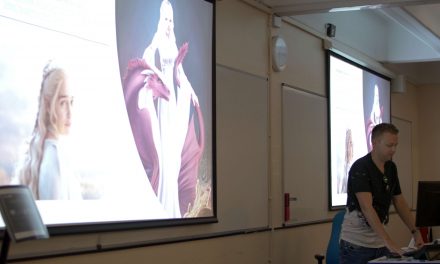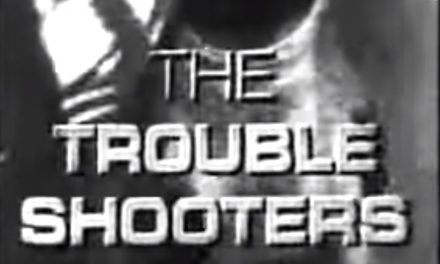‘The United States has entered one of its periods of historical madness, but this is the worst I can remember . . . The reaction to 9/11 is beyond anything Osama bin Laden could have hoped for in his nastiest dreams.’
— John le Carré, ‘Opinion: The United States Has Gone Mad,’ The Times
(London), 15 January 2003
When it comes to making sense of 9/11 and its aftermath, most Americans are still watching screens, looking for answers. It is no accident that the most iconic image related to the killing of Osama bin Laden is a picture of President Obama’s National Security Team taken by White House photographer, Pete Souza, viewing a live video feed of the raid being transmitted back by an unmanned drone as it happened at 4:06 p.m. ET (1:06 a.m. Abbottabad, Afghanistan time) on May 1, 2011. We watch everyone in that small conference room staring intently at some unseen screen, but no one more so than Secretary of State Hillary Clinton, whose expression of shock and awe (which she later downplayed as suppressing an allergic cough) adds emotional power to an unexpectedly arresting image. They are our surrogates in this photograph. We are all voyeurs in the War on Terror.

In due time, the government released a series of video captures of a white-haired Osama bin Laden using a remote control to scan DVDs and tapes in his Abbottabad compound. He too tried to stay abreast of events. No matter how detached, isolated, and on the run. We all share an obsessive need to look and listen carefully in the post-9/11 world. It is often impenetrable, filled with sudden and violent surprises, seemingly fraught with all sorts of unforeseen dangers. Like amateur sleuths, we scour the many screens around us searching for clues, some kind of quick assurance, as if our survival depended on it. Spying in turn has become one of the central metaphors of being alive in the digital age. Espionage is once again a popular entertainment genre. 9/11 in particular has caused us all to become masters of surveillance.

The spy genre, dating back well into the 19th century, is replete with familiar conventions we have internalized long ago as readers and viewers: the dark and dangerous world of covert operatives, often weighed down by divided loyalties, wearing elaborate disguises, and trafficking in secret communications. The spy is an especially apt protagonist in the 21st century where information is the most-prized commodity in the multi-mediated environment that envelops us. An agent’s stock-and-trade is acquiring knowledge, navigating the ins and outs of a no-man’s-land where all moral certainties and restrictions are held in strict abeyance in order to serve the greater good of one side or another. The politics of committal identity is endemic to the internal dynamics of the spy story, just as it was to the principal combatants involved in 9/11.
In a September 12, 2001 prime-time TV address, President George W. Bush christened the conflict ‘a monumental struggle of good and evil.’ Bush’s early nemesis, Osama bin Laden and his al-Qaeda followers similarly reflected the general tendency of demonizing their own archenemy of choice—the United States—as the world’s ‘Great Satan.’ During the first six months after 9/11, the Bush administration and the American people harmoniously embraced a ‘just war’ scenario in Afghanistan. Television was the pivotal forum on which this tacit agreement between government policy and public consensus was reached. By the time American-led forces invaded Iraq on March 19, 2003, however, U.S. public opinion had become far more polarized on how best to move beyond 9/11, protect the homeland, and conduct the War on Terror.
Then on April 28, 2004, CBS’s 60 Minutes II telecast a prime-time report entitled, ‘Inside Abu Ghraib,’ featuring photographic evidence that documented Iraqi prisoner abuse by U.S. military personnel at Abu Ghraib prison, a facility previously run by Saddam Hussein’s regime where dissidents were routinely tortured and executed. Within 24 hours, images shown on this program, including a hooded man standing scarecrow-like on a box with his arms extended as electrodes dangled from his fingers, were circulated on the Internet, seen on television, and published in newspapers all around the world. Cultural historian Melani McAlister concluded soon afterwards that ‘the damage done by the Abu Ghraib photographs to the reputation of the United States in the Arab world was incalculable’ (297-299).
The subsequent repercussions in the United States were similarly profound and they remain unresolved today, even as torture has become a commonplace trope in several prominent post-9/11 television and movie secret agent narratives. As John le Carré’s above assertion implies, September 11 unleashed a folie à plusieurs—a kind of shared psychosis—across the country where the first reaction from the government and citizenry together was to embrace a war without end footing. No longer was the nation’s psyche an impregnable fortress; Americans now believed that an unexpected tragedy was possible anywhere, at any time. Extraordinary measures such as increased surveillance, indefinite detention, and enhanced interrogation were quickly justified and adopted. In retrospect, U.S. ambivalence towards these policies is evident in a wide variety of socio-political, cultural, and artistic expressions including the recent resurgence in the spy genre on television and film since September 11, 2001.
Fictionalized espionage pretends to take us behind the scenes of global events and thus the spy story is rich narrative terrain to interrogate the War on Terror as it was earlier for the Cold War and other international conflicts. Conceived before 9/11, Fox’s 24 (2001-10) arrived less than two months after September 11, 2001 featuring special agent, Jack Bauer (Kiefer Sutherland), the most skilled and zealous member of the fictional Counter Terrorist Unit, which was created to protect government officials and civilians alike from subversive and clandestine attacks on domestic soil. As the program evolved, Bauer’s no-holds-barred tactics emerged as a source of growing controversy, especially in the character’s enthusiastic use of torture on suspected terrorists when it appeared that time was running out and American lives were at stake.
14 February 2007 news story on the Aftereffect of 24’s Depictions of Torture from CNN’s The Situation Room with Wolf Blitzer:
Two veteran writer-producers on 24, Howard Gordon (who worked on the series for eight years) and Alex Gansa (two years) next co-created Showtime’s Homeland (2011-present), which tellingly recasts the post-9/11 spy story around a female protagonist, Carrie Mathison (Claire Danes). Besides being a woman, CIA analyst Mathison is infinitely more nuanced as a character than 24’s more stereotypical action hero, Jack Bauer. She is psychologically complicated and acutely perceptive. Her evident mood swings are later revealed to be a genetic bipolar affective imbalance inherited from her father. In Homeland’s fictional calculus, Carrie Mathison’s bipolar condition is an apt synecdoche for the current state of the post-9/11 American psyche, oscillating between aggressive offensive actions abroad and fear-filled defensive maneuvers at home.
In the pilot, Mathison learns from one of her on-the-ground informants in Baghdad that an unnamed ‘American prisoner of war has been turned.’ This character turns out to be her antagonist, U.S. Marine sergeant Nicholas Brody (Damian Lewis), who suffers torture at the hands of first al-Qaeda mastermind, Abu Nasir (Navid Negahban), and later Carrie’s fellow CIA operatives. During episode five of season two, ‘Q&A,’ Brody is subjected to a ‘bad cop/good cop’ routine where Mathison’s colleague, Peter Quinn (Rupert Friend) drives a knife into the back of his left hand à la Luca Brasi in The Godfather. Carrie then swoops in and apparently turns Brody’s allegiance, although the effectiveness of torture as a tactic is soon called into question as the information Brody divulges ends up being incomplete and inconclusive.


A similar kind of ambiguity pervades the handling of torture in Kathryn Bigelow’s Zero Dark Thirty (2012). Despite the resulting controversy, it is impossible to determine with any kind of certainty that this film either condones torture (as some have vehemently argued) or implies that such brutal and inhumane methods as waterboarding led directly to the finding and killing of Osama bin Laden. ‘Like a white on white canvas, Zero Dark Thirty has become a projection screen for the audience’s perceptions and sympathies, taking on different colors and contours depending on what the viewer brings to it’ (Walter, 26). Likewise, the steely cool countenance of Zero Dark Thirty’s lead character Maya (Jessica Chastain) functions a lot like a Rorschach test inviting viewers to project their own selective perceptions onto her. Where Carrie Mathison’s psychological profile in Homeland serves as a resonant metaphor for the nation she embodies, Maya in Zero Dark Thirty is a more personal representation of what 9/11 has cost us all as individuals over the intervening twelve years.
All told, Americans specifically can no longer avert their eyes from the toll taken by September 11 and its aftermath. In the final sequence of Zero Dark Thirty, Maya is our proxy who unzips the body bag and identifies Osama bin Laden’s corpse. It is her mission to come face-to-face with what has haunted her for more than a decade. In the end, the killing of bin Laden fails to give her the closure she has obsessively sought.

More importantly, Maya and Carrie as female secret agents exemplify a significant innovation in the contemporary spy story. Jack Bauer is pre-9/11 in conception; he is more soldier than spy who tells President Allison Taylor towards the end of 24: “We’ll both have to live with the things we’ve done.” Maya and Carrie in contrast personify a new sort of protagonist left to make sense of those ‘things’ that Bauer and the other soldiers in the War on Terror have enacted in the name of keeping the country safe.


On May 23, 2013, President Barack Obama announced in a much-anticipated speech at the National Defense University in Washington, D.C. that America’s state of perpetual warfare begun on September 11, 2001 was finally winding down: “This war, like all wars, must end. That’s what history advises. It’s what our democracy demands.” As women spies, Maya and Carrie are post-9/11 harbingers of change for a nation eager and willing to move beyond its wars of choice in Iraq and Afghanistan. They are also artistic creations whose hard-won self-awareness, born of a growing ability to question and self-correct, is the last best line of defense when it comes to ensuring homeland security.
Gary R. Edgerton is Professor and Dean of the College of Communication at Butler University. His latest volumes are Westerns: The Essential Journal of Popular Film and Television Collection with Michael T. Marsden (Routledge, 2012) and Mad Men: Dream Come True TV (I.B. Tauris/Palgrave Macmillan, 2011), while The Sopranos was just published in March 2013 by Wayne State University Press as part of its TV Milestones series. He also coedits the Journal of Popular Film and Television.





